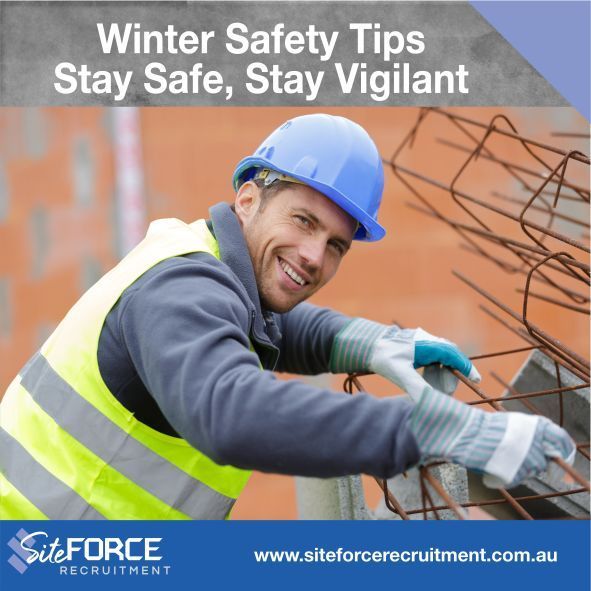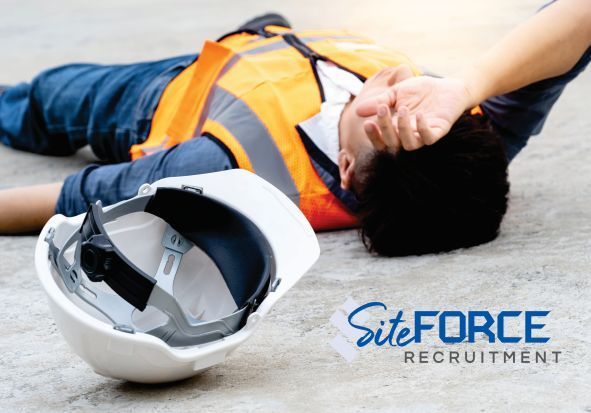Winter Safety Mojo for Construction Workers
Stay Safe, Stay Vigilant

Winter safety is a big deal for construction sites in Australia. When the colder months roll in, it is good to consider the impact of winter weather patterns in Australia. The country's vast size and diverse climate zones mean that winter conditions can vary. Along the eastern coastline, winters are generally mild to cool, with moderate rainfall. Cold fronts from the south can bring cooler temperatures and occasional storms.
The latest Safe Work Australia figures show 160 Australian workers were killed on the job in 2022. Let's face the facts: the construction industry can be risky, and adding winter hazards to the mix only increases the chances of accidents. Hence, it's crucial to prioritise the well-being of our workers and take appropriate measures to keep them safe. This article offers guidance on winter safety for construction sites, but the information can also be useful for other organisations with employees working outdoors.
Planning
So, what can be done to ensure everyone stays safe and warm? Planning is key. By planning ahead, you can reduce the likelihood of accidents and incidents.
General Health Issues
Winter brings its own set of risks for construction workers. As temperatures drop, it can affect their health. Cold weather can lead to illnesses, especially for workers who already have underlying cardiovascular or respiratory problems, or those on certain medications. Prolonged exposure to cold temperatures can also cause joint pain, fatigue, and even more serious conditions like hypothermia and frostbite if proper protection isn't in place. Frostbite can even happen when the skin is covered, but the protective gear is wet or doesn't provide enough warmth.
Colder temperatures can also make workers more prone to making mistakes due to lack of concentration and slower reaction times. It's harder to stay focused in the cold, and some people may experience seasonal affective disorder (SAD), which can lead to feelings of sadness, tiredness, and depression.
Breaks
Regular breaks are crucial for workers to warm up and recharge. Make sure there's a suitable rest area with an appropriate temperature. It's important for workers to know the symptoms of cold stress and take necessary precautions to protect their health, safety, and well-being. Signs of cold stress include: shivering, numbness or tingling, pale or bluish skin, fatigue or weakness, confusion, slurred speech, clumsiness or lack of coordination, dizziness or fainting, increased heart rate or frostbite or hypothermia. Providing facilities for a worker to warm up or boil water for hot drinks is a great idea.
Clothing and PPE
Outdoor workers should wear appropriate clothing that fits well. Thick, warm socks are essential to counteract the cold metal of steel-toe boots, which can make feet colder faster. Layering clothing is also important, as workers can remove a layer when they get hot or wet.
Understanding the specific risks and adapting PPE choices accordingly allows construction workers to effectively mitigate winter-related hazards and work safely in cold weather conditions. Construction workers face additional challenges in cold weather conditions, so proper selection and use of PPE are vital.
Insulated or thermal clothing is a must to maintain body heat and prevent hypothermia or frostbite. Insulated gloves help keep hands warm and nimble while protecting against cold-related injuries. Anti-slip footwear with good traction is essential for preventing slips and falls on icy or wet surfaces. Eye and face protection may need adjustments to prevent fogging or frostbite. Gloves should be assessed for suitability and proper fit, ensuring they don't pose a risk of entanglement with machinery. Different types of gloves are available for different tasks, so workers should use the appropriate ones.
Power Tools
Handling power tools in winter poses specific risks for outdoor workers. The cold temperatures can make it more challenging to operate the tools effectively, as the cold can affect dexterity and cause numbness in the hands. This increases the likelihood of accidents or injuries occurring due to decreased grip strength and reduced control over the tools. Additionally, hand-arm vibration syndrome, which is already a concern when working with power tools, can be exacerbated in colder temperatures. The combination of cold weather and prolonged exposure to hand-arm vibration can lead to increased fatigue, muscle strain, and even long-term health issues. Therefore, it is crucial for outdoor workers to take extra precautions, such as wearing appropriate insulated gloves, to protect themselves from the risks associated with handling power tools in winter conditions.
Reduced Light
The amount of day/natural light in the winter is reduced, which in return leads to an increased risk of accidents. As daylight hours decrease, ensuring visibility and reducing the risk of accidents needs to be addressed, and the amount of lighting required on-site must be properly assessed and planned. There needs to be sufficient lighting provided to enable workers to see hazards.
Monitoring Site Conditions
The Construction or Site Manager and workers should be monitoring the weather forecast, especially the daily temperatures, so that measures can be put into place to manage the risk from ice, frost, severe weather conditions such as storms or strong winds or ground that can become slippery or muddy. When the ground is muddy, workers are exposed to a risk of harm occurring therefore, measures need to be taken to reduce the likelihood of harm occurring.
Workers should ensure that their footwear is clear of mud as far as is reasonably practicable and that any access equipment that they intend to climb, such as ladders etc., are also clear of mud. Also, workers should be informed to slow down and not to rush. To help reduce the hazard of slips on-site, good drainage will help prevent standing water and will contribute to the land drying quicker.
Strong winds can also lead to hazards through materials being blown around site and becoming dislodged and/or the uplifting of scaffolding.
Winter Safety Checks
Finally, monitoring is important to ensure that the measures implemented are effective and that workers are following them. Regular safety checks of the site will identify any hazards that need measures implemented to reduce the likelihood of harm occurring and, likewise, check that the measures are in place and are still working. Safety checks should be carried out on the site following any periods of heavy rainfall, strong winds, snow, or ice.
Replacing Staff and Meeting Deadlines
It is inevitable that people get sick in winter, and companies can proactively address the impact of sickness by not only promoting a supportive and healthy work environment, but also, in cases where employees are unable to work due to illness, temporary staff to fill the gaps. This ensures the business operations continue smoothly without putting stress on the team and being unable to complete projects on time – it is a logical and viable solution. This can involve sourcing and placing qualified candidates on short-term assignments as well as labour-hire services through SiteForce Recruitment.
To conclude, working in the winter months can be more challenging compared to other times of the year because of the cold temperatures, lack of light, wet conditions, stronger winds and storms. Each worker’s experience will be different, and it’s important to be understanding, empathetic and flexible in supporting their mental health during the winter season. Let's reduce the chances of harm happening and make winter work a little safer for everyone.
Related articles:
The Limitations of Personality Indicators in Recruitment
Tradespeople Needed to Build a Stronger Construction Industry
SiteForce Recruitment specialise in labour-hire and permanent recruitment in the construction industry. We are committed to valuing people, safety and well-being, collaboration, trust and of course – results!
CONNECT with us via our contact page or bookings links on our website if you are looking to recruit for, get your dream job, or join our amazing labour force team.
#siteforcerecruitment #recruitment #labourhire #brisbanejobs #jobsinconstruction











